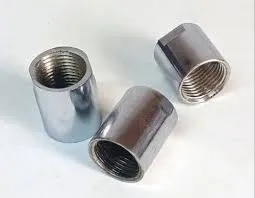-
Cangzhou Yulong Steel Co., Ltd.
-
Phone:
+86 13303177267 -
Email:
admin@ylsteelfittings.com
- English
- Arabic
- Italian
- Spanish
- Portuguese
- German
- kazakh
- Persian
- Greek
- French
- Russian
- Polish
- Thai
- Indonesian
- Vietnamese
- Zulu
- Korean
- Uzbek
- Hindi
- Serbian
- Malay
- Ukrainian
- Gujarati
- Haitian Creole
- hausa
- hawaiian
- Hebrew
- Miao
- Hungarian
- Icelandic
- igbo
- irish
- Japanese
- Javanese
- Kannada
- Khmer
- Rwandese
- Afrikaans
- Albanian
- Amharic
- Armenian
- Azerbaijani
- Basque
- Belarusian
- Bengali
- Bosnian
- Bulgarian
- Catalan
- Cebuano
- China
- China (Taiwan)
- Corsican
- Croatian
- Czech
- Danish
- Esperanto
- Estonian
- Finnish
- Frisian
- Galician
- Georgian
- Kurdish
- Kyrgyz
- Lao
- Latin
- Latvian
- Lithuanian
- Luxembourgish
- Macedonian
- Malgashi
- Malayalam
- Maltese
- Maori
- Marathi
- Mongolian
- Myanmar
- Nepali
- Norwegian
- Norwegian
- Occitan
- Pashto
- Dutch
- Punjabi
- Romanian
- Samoan
- Scottish Gaelic
- Sesotho
- Shona
- Sindhi
- Sinhala
- Slovak
- Slovenian
- Somali
- Sundanese
- Swahili
- Swedish
- Tagalog
- Tajik
- Tamil
- Tatar
- Telugu
- Turkish
- Turkmen
- Urdu
- Uighur
- Welsh
- Bantu
- Yiddish
- Yoruba

Sep . 13, 2024 05:12 Back to list
steel threaded fittings
Understanding Steel Threaded Fittings An Essential Component in Industry
Steel threaded fittings are crucial components in various industrial applications, offering a robust and reliable method for connecting pipes and tubes. These fittings, typically made from high-quality steel, include a range of forms such as elbows, tees, couplings, and reducers. Their primary function is to allow for the seamless joining of piping systems, enabling fluid transport across different sections the infrastructure.
One of the key advantages of using steel threaded fittings is durability. Steel, known for its strength and resistance to impact, provides a long-lasting solution for both high-pressure and high-temperature environments, making it an ideal choice in industries like oil and gas, construction, and manufacturing. Unlike plastic fittings, which may degrade over time, steel fittings are resistant to corrosion and can maintain their structural integrity in harsh conditions, especially when coated with protective finishes.
Installation of steel threaded fittings is relatively straightforward, often requiring basic tools for threading and assembly. This ease of installation allows for quicker project turnaround times, a significant benefit in industries where time is critical. The threaded design ensures a secure connection, which minimizes the risk of leaks, a common concern in fluid transport systems. Ensuring that fittings are correctly threaded and tightened can lead to a leak-proof seal, enhancing the overall efficiency and safety of the piping system.
steel threaded fittings

In addition to their mechanical properties, steel threaded fittings are versatile. They can accommodate a range of pipe sizes and configurations, making them suitable for various applications, from residential plumbing to large-scale industrial installations. This versatility is one of the reasons they remain a staple in the engineering toolbox.
However, it is essential to consider the appropriate standards and specifications when selecting steel threaded fittings. Different applications may require fittings that meet specific industry standards, ensuring safety and compatibility. For instance, fittings used in high-pressure applications need to adhere to rigorous pressure ratings to prevent failures.
While using steel threaded fittings comes with numerous advantages, it is also crucial to be mindful of proper maintenance. Regular inspection for signs of wear or corrosion can help prolong the life of both fittings and piping systems. Additionally, understanding the environmental conditions in which these fittings are used can guide maintenance schedules.
In conclusion, steel threaded fittings play a vital role in the connectivity of piping systems across various industries. Their strength, durability, and ease of use make them indispensable in applications where reliability and safety are paramount. By selecting the right fittings and adhering to maintenance practices, industries can ensure efficient and effective fluid transport solutions.
Latest news
-
ANSI 150P SS304 SO FLANGE
NewsFeb.14,2025
-
ASTM A333GR6 STEEL PIPE
NewsJan.20,2025
-
ANSI B16.5 WELDING NECK FLANGE
NewsJan.15,2026
-
ANSI B16.5 SLIP-ON FLANGE
NewsApr.19,2024
-
SABS 1123 FLANGE
NewsJan.15,2025
-
DIN86044 PLATE FLANGE
NewsApr.19,2024
-
DIN2527 BLIND FLANGE
NewsApr.12,2024
-
JIS B2311 Butt-Welding Fittings LR/SR 45°/90° /180°Seamless/Weld
NewsApr.23,2024











